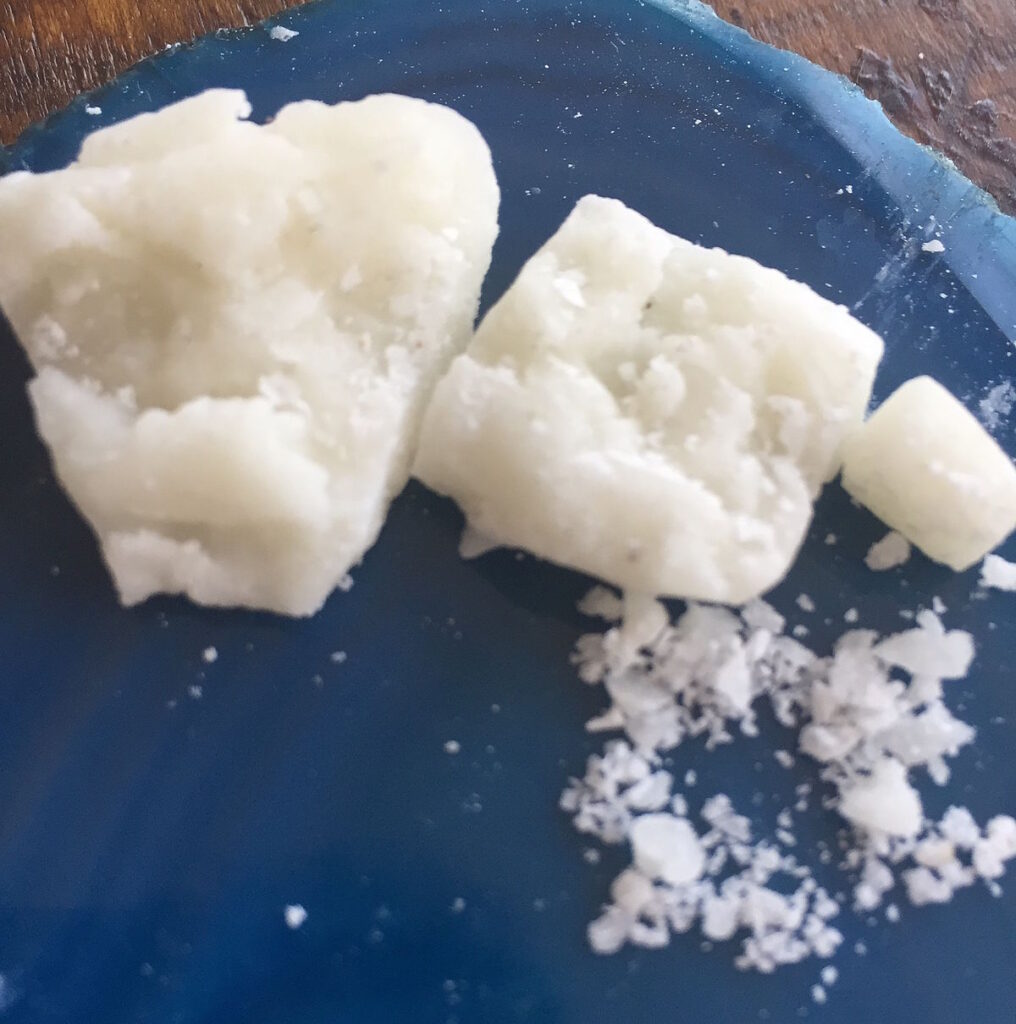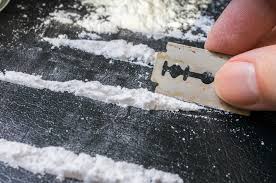How to Cook Crack – Convert Cocaine HCl into Freebase Cocaine

Ever wondered how to cook crack? Well, you’ve come to the right place. Before we continue, this would probably be a great time to mention our disclaimer. Basically, we know this stuff is a touchy subject, but that doesn’t make sharing information illegal. Cocaine exists in at least two distinct chemical forms, each influencing how the drug is consumed, experienced, and regulated. We generally refer to cocaine hydrochloride (HCl) when discussing cocaine in its most widely encountered form. This is a water-soluble (in chemistry,this is known as being a “polar” molecule) powder often snorted or injected. This powdered form can be converted (or cooked) into a smokable, more rapidly acting variant, colloquially known as “crack”.) This variant is commonly called “freebase cocaine” or simply “freebase.” The conversion is done by removing the hydrochloride active group through a chemical process known as “freebasing.” This transformation changes the substance’s volatility. It also affects how swiftly it enters the bloodstream. This alteration changes both the intensity and duration of its effects.
In this article, we will delve into the fundamental chemistry behind converting cocaine HCl into its freebase form. We will explore how cooking crack changes its properties. We will also examine what the structural differences entail. Additionally, we’ll discuss how this process affects both the user’s experience and the surrounding legal landscape. By understanding the scientific and cultural dimensions of freebase cocaine, readers can better appreciate the implications of prohibitionist policies. They can also understand safety considerations, and the rationales behind a more transparent, harm-reduction-oriented approach to drug information.
Part One: What is Cocaine HCl and why would I want to cook crack?
Cocaine Hydrochloride: The Dust That Built Empires
They call it “blow,” but let’s not pretend powdered cocaine is just a party favor. This fine white powder has toppled governments, funded wars, and kept Wall Street running overtime—all while hiding behind a chemistry textbook’s bland alias: cocaine hydrochloride. But don’t let the fancy name fool you. This is no humble compound; it’s a stimulant that’s as misunderstood as it is infamous.
What Is Cocaine, Really?
Cocaine hydrochloride is an alkaloid extracted from coca leaves. This plant is indigenous to South America. Locals have chewed the leaves for centuries to stave off hunger and boost energy. Then some 19th-century scientists decided to get fancy and isolate its active compound. The result? A product that made Freud call it a “magical substance” and Big Pharma scramble to bottle it. Spoiler: things escalated quickly, especially after the CIA figured out how to cook crack and shared that process with inner-city (predominantly black) communities.

What Does It Do?
Once ingested—snorted, rubbed on gums, or dissolved—cocaine hydrochloride makes your brain hit the gas. It blocks the reuptake of dopamine, that lovely “feel-good” chemical, leaving you riding a wave of euphoria, energy, and confidence. But, like every story worth telling, this one comes with a price. It includes rapid comedowns, potential dependency, and a societal stigma. This makes open, honest dialogues about cocaine difficult, risky, and rare. That’s part of the problem that oniions.com is trying to rectify.
Let’s Get Real
Despite its glamorized portrayal in pop culture and demonization in legal circles, cocaine is neither devil nor deity. It’s a substance—powerful, yes, but manageable with the right approach. Understanding its effects, dosages, and risks isn’t just smart; it’s essential for anyone stepping into its world. Respect the powder, and it’s a tool. Misuse it, and it’s a weapon.
A Word to the Curious
Cocaine hydrochloride is a lesson in contrasts: it’s ancient and modern, revered and reviled, exhilarating and dangerous. If you’re going to explore it, do it with open eyes, a clear head, and a finger firmly on the pulse of harm reduction. The system may not want you to know this, but knowledge is power—and in this game, it’s the ultimate safety net.
Part II: Crack (aka Freebase Coke, Rock)
Crack Cocaine: The Spark That Lit a Fire
If powdered cocaine is the tuxedoed Wall Street exec, crack is its gangster cousin—grittier, louder, and unapologetically raw. Officially known as freebase cocaine, this smokable form flips the script on what “refined” means. Born in clandestine kitchens and perfected on the streets, crack is less about playing coy and more about cutting straight to the chase.
What Is It, Really?
At its core, crack is just cocaine in a more… liberated form. While powdered cocaine hydrochloride clings to its salt molecule, whereas crack breaks free (hence “freebase”) by removing it through a little alchemy involving baking soda and heat. The result? A rock that’s smokable, potent, and fast-acting, no fancy lab coat required. If you’re interested in how to cook crack, understanding this process is essential.
What Does It Do?
When smoked, crack cocaine skips the pleasantries and heads straight to the bloodstream via the lungs. The effects hit fast and hard—an intense euphoria and energy rush that’s over in minutes but feels like an eternity in its prime. It’s a fireworks show: spectacular, brief, and always leaving you wanting more. But, as with all things that burn bright, there’s a crash waiting in the wings.
Let’s Get Real
Crack didn’t ask to be the poster child for the war on drugs—it was made one. The moral panic of the 1980s turned a chemical process into a political lightning rod. The truth? It’s chemistry, not chaos. But its street reputation as cheap, potent, and accessible ensured crack became a symbol of everything “wrong” with drugs, despite being chemically nearly identical to its powdered sibling.
A Word to the Curious
Crack isn’t here to charm you—it’s here to hit hard and leave you thinking about its next visit. But for all the stigma and propaganda surrounding it, crack remains what it’s always been: a potent substance that demands respect, understanding, and maybe a little less judgment. If you want to learn how to cook crack, keep your head clear and your facts straight.
Part Three: How to Cook Crack
Now that you know the differences and similarities between crack and coke, we can finally get into the reason this page was written. Ladies and gentlemen, without further ado, here is how you cook your powdered coke into pure, smokable, crack rock.
Ingredients for Liberation: What You’ll Need to Cook Crack Cocaine
Here’s what goes into freeing the base from its chemically-bound shackles. Spoiler: You won’t need much.
1. Cocaine Hydrochloride (Powdered Cocaine)
The star of the show. Without it, you’re just heating water for no reason. Quality matters here; low-grade starting material will give you a lackluster result.* Let’s not kid ourselves.
*The process of converting cocaine hydrochloride to crack also purifies the product. For this reason, cooking your coke into crack is a form of harm reduction.
2. Baking Soda (Sodium Bicarbonate)
Not just for cookies, folks. This humble pantry staple is your alkali, used to neutralize the acid in cocaine hydrochloride and set the freebase form loose. No, you don’t need anything fancier—just plain ol’ Arm & Hammer will do.
3. Water
Distilled or tap, as long as it’s clean. You’ll use it to dissolve your ingredients and create the chemical reaction that frees the base. No cutting corners here—crystal clear only.
4. Heat Source
Here’s where things get toasty. A stovetop works, but a portable heat source like a small butane torch or candle does the job just as well. Remember: we’re aiming for controlled heat, not chaos.
5. A Spoon or Small Heat-Resistant Dish
Preferably metal or glass, because plastic just won’t cut it. This is where the magic happens—the cocaine hydrochloride dissolves, the baking soda reacts, and your freebase begins to form.
6. A Stirring Tool
Anything clean and sturdy will do: a small knife, a glass rod, or even a toothpick. You’ll need this to stir the solution during the reaction process.
7. Ice or Cold Water (Optional but Recommended)
To cool the final product quickly and help it solidify into rock form. It’s not mandatory, but it makes handling the result easier and cleaner.
A Word of Warning
While the ingredients list is simple, don’t be fooled—this isn’t a recipe for a carefree afternoon. This process is controlled chemistry, not backyard BBQ experimentation. And yeah, “the powers that be” probably frown on this kind of science fair project. Be warned: when crack is cooked, it purifies the cocaine. Therefore, there will be some residual substances left in the container you used to cook.
Leave a Reply